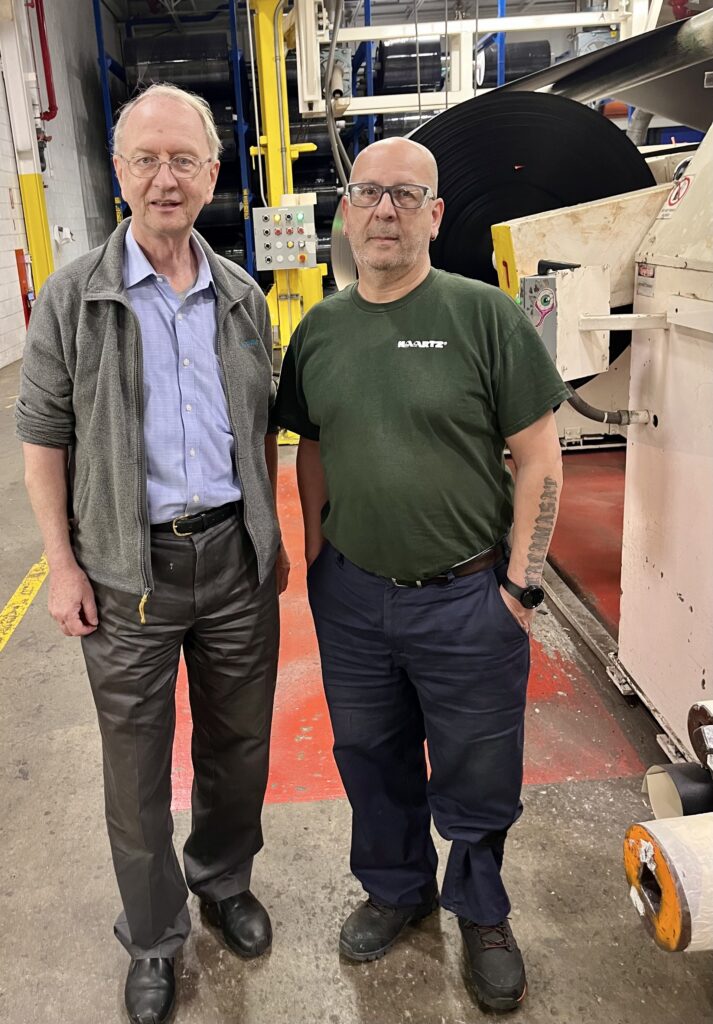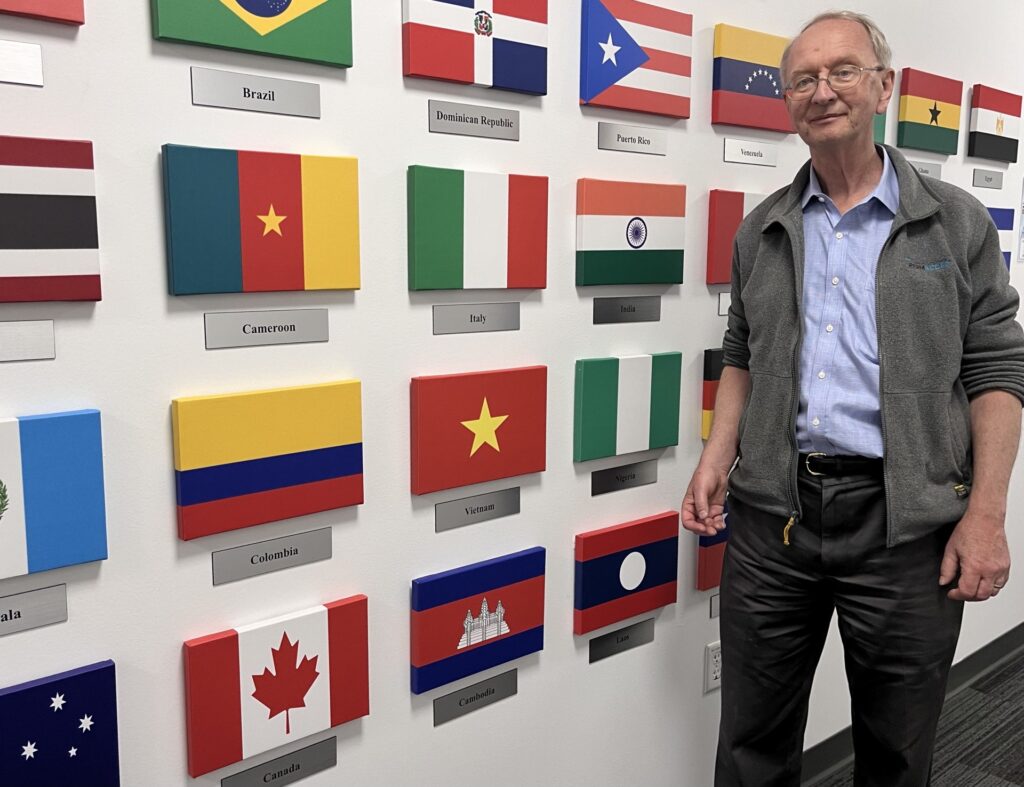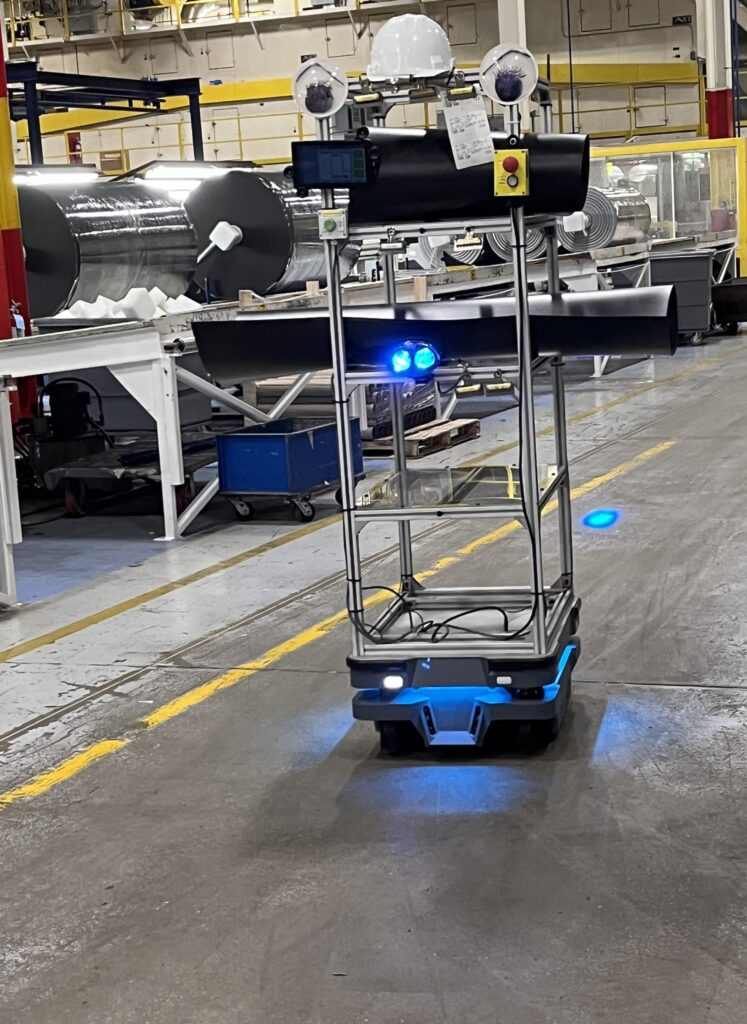Eric Haartz was starting graduate school in 1977 when his father John C. Haartz Jr., president of the Haartz Corporation, died unexpectedly. At a family meeting following the funeral, young Eric was asked if he would be interested in taking over the business. He said he was but wanted to finish his master’s degree in Geology first and then come back. So his uncle Ken, the company’s general manager, stepped in as interim president. Good to his word, Eric Haartz returned, and 45 years later, is still heading the private heavy manufacturing company founded by his grandfather.
The Haartz Corporation, nestled in the pines on Hayward Road in Acton, deliberately has a low-key presence, in keeping with local aesthetics. But here in the company’s world headquarters, nearly four hundred employees produce vast amounts of high-quality coated fabrics. In fact, the Haartz Corporation is the world’s number one supplier of fabrics for convertible car tops and a leading producer of interior trim materials for car dashboards and doors. “We supply the rolled goods,” explains Haartz, “and our customers do the fabrication work—cut, sew, and put it together for a convertible top, or in the case of a door or instrument panel, mold that out to what the piece is going to be.”
When Eric Haartz joined the company in 1979, he started training to be president under the mentorship of his uncle, who then phased into retirement. “My geology degree helped me embrace the engineering and technical side of this business,” says Haartz. “In an era when MBAs were being cranked out by the trainload, I didn’t come in swaggering. I had to extract knowledge from working relationships with people here.”

As the business expanded over the next four or five years, Haartz took on the role of CEO rather than the commanding executive. Today, managerial duties are spread among the president, John Millea, and functional vice presidents. Millea, who started his career as a product development technician and grew with the company, is now the day-to-day lead. Eric Haartz’s role includes setting future direction, communicating with the board of directors and other stakeholders, and ensuring regulatory compliance. “Over the years, I’ve learned to be a governance geek,” he says. “I wear my hat of corporate secretary with pride.”
The history of the company is of particular interest to Haartz, an antique car enthusiast. In 1907, when cars were two-seater roadsters or five-passenger touring cars with no side windows and a folding top, Haartz’s grandfather, John C. Haartz, Sr., saw an opportunity to make an outer topping fabric of mohair, which was easier to clean than cotton. “Basically, the material was a sort of peanut butter sandwich,” says Haartz, “two layers of cloth with a rubber film in between to make it waterproof and give it tailorability on a three-dimensional object like a car top. If you disregard the specific components, that fundamental idea of a peanut butter sandwich—two textiles and a rubber film in between—is with us today. You see this on any recent convertible and also on the Ford Bronco and Jeep Wrangler cars with soft tops.” The company began using synthetic fabrics for car tops in 1922..
In the 1960s, the company experienced strong growth and outgrew the vintage mill building where they’d been in Newton. So Eric’s dad and uncle started looking for a “greenfield” site or an existing building. They came across a site in Acton that was on the market that had housed a wire coating firm (1950-1966), which had moved to Connecticut. His dad and uncle bought it and began the transition in the summer of ’65. They transferred old machinery and purchased some new.
In 1966, the company made its first products for interior trim. The Haartz Corporation acquired a competing company in Germany in 1994, which led to international collaborations and operations in Portugal, China, Japan, and Mexico. The company is now looking at emerging market opportunities that are not automotive.

Walking around the Haartz plant amidst the roar of machinery, one realizes this is an entirely different enterprise than anything else in Acton. The floor is filled with fabric spooling drums, tall racks of rolled material, and equipment operators and computers. Fork-lift trucks move about carrying heavy loads. And Wally, a robotic vehicle, whizzes by, with blue lights warning of its approach, on its way to deliver production samples for quality inspection.

“I’m proud of what we do and encourage that pride with all our fellow workers,” says Haartz. “We try to keep a culture that encourages confidence, expertise, and mutual care for one another.”
The feeling of a work family is evident. As Haartz walks by, he often says hello to people by name. One made the unsolicited remark that Haartz “is a real good person.” Every December, the CEO makes a point of walking around greeting everyone for the holidays. “It’s not unusual for these to turn into conversations that run 30, 40 minutes, or even an hour,” he says. “At the end of a week or two of that, I’m toast, but I’m happy toast.”
Haartz has led the company through challenging times, such as the global recession in 2008 to 2009 and the Covid health crisis that began in 2020. The managerial time frame, he says, collapsed from years ahead to hours and days. Yet the company survived.
Today he’s concerned about future sustainability. “We are finalizing plans for a solar array,” he says, “however, solar panels will only offset a couple percent of our electrical consumption. So we’re looking at other ways to better steward our energy consumption and our materials consumption.”
Haartz jokes he hasn’t gotten far in life, because he was born in Waltham, grew up in Lincoln, lives in Concord, and works in Acton. But one could definitely argue that he has. He believes the company will continue to be a dynamic, robust manufacturing facility, and that his daughter, Deborah, who now works in marketing, will define her future role in the company based on her aptitudes. “Thankfully,” he says, “she has a value set that suits her well for carrying out the culture of this company.”
Nancy Knoblock Hunton is a volunteer writer for Acton Exchange, specializing in profiles of people who have made contributions to the community.
